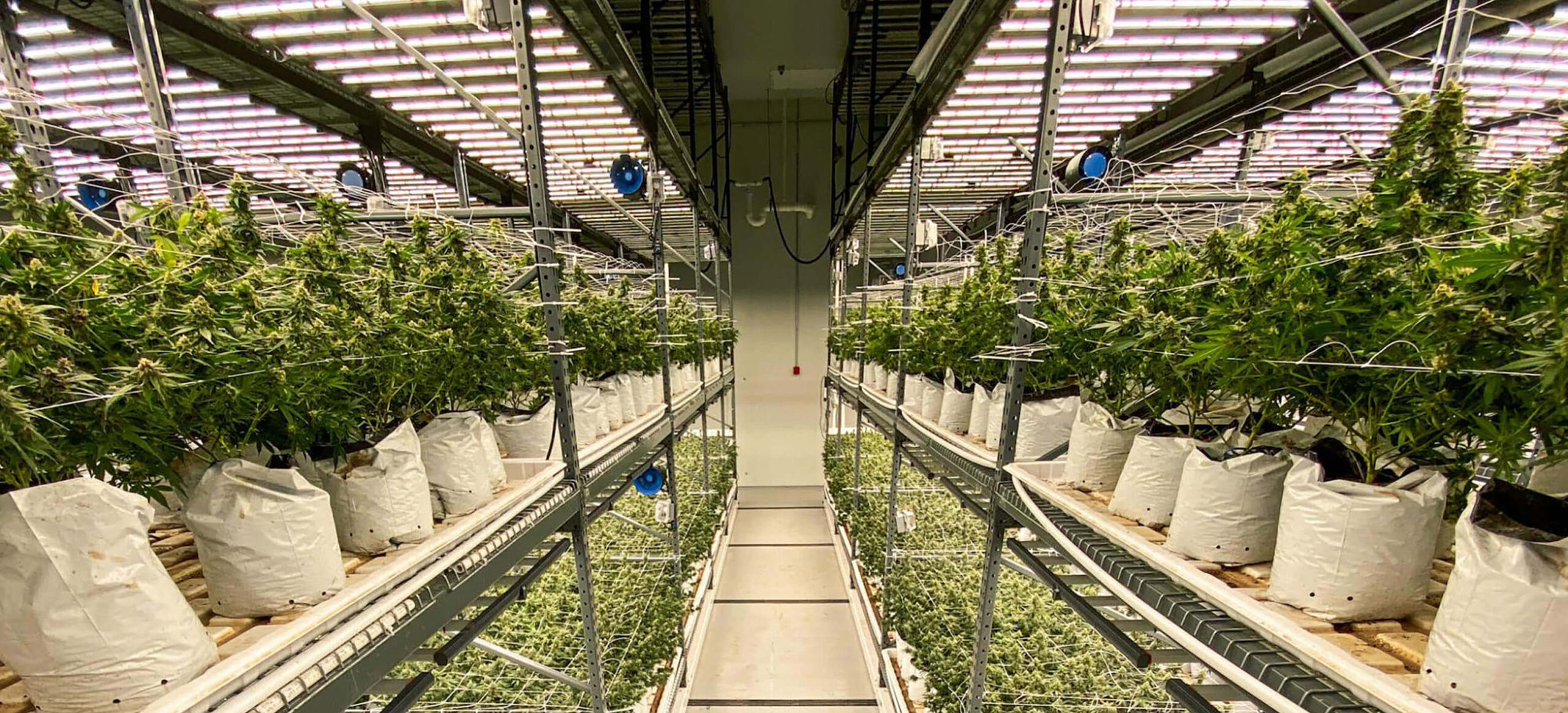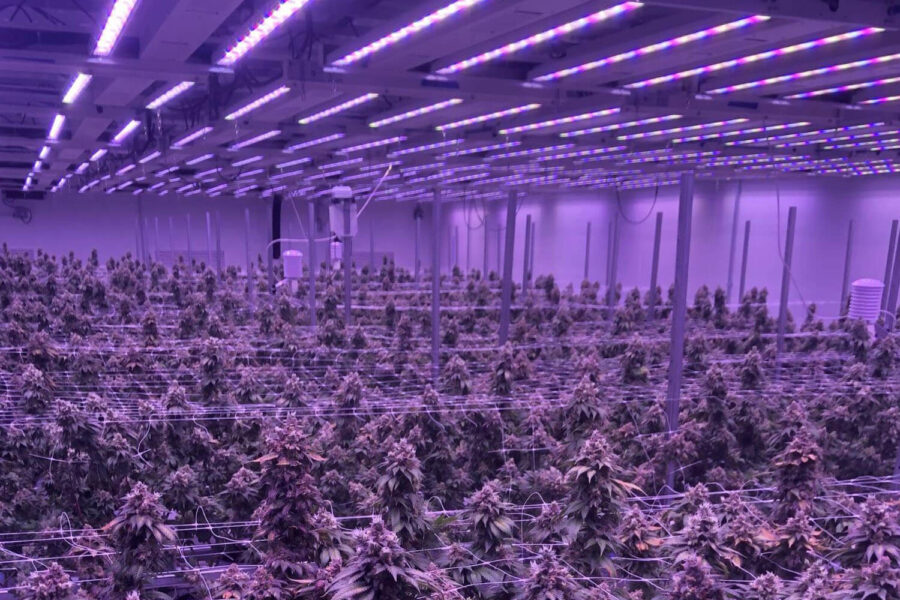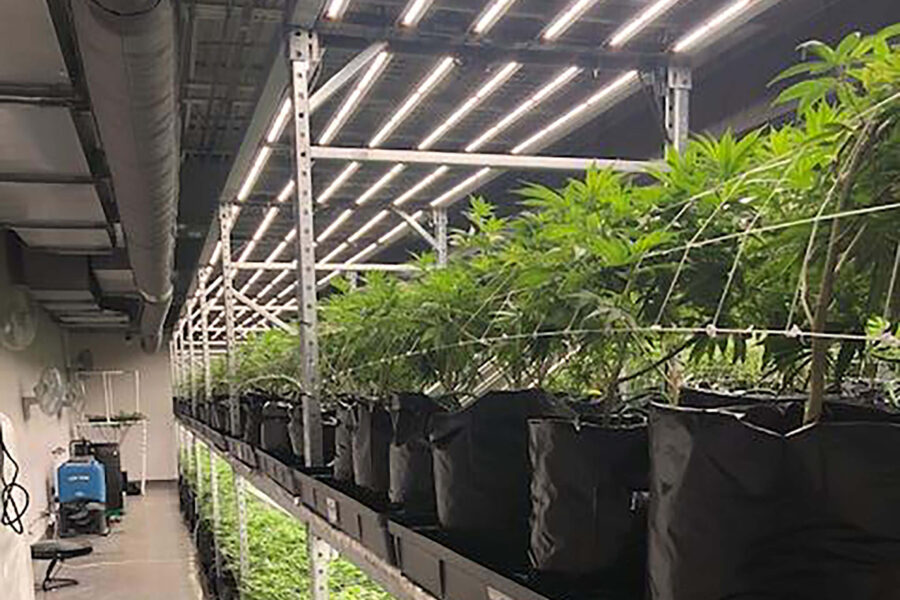Somerset, MA
Indoor Facility
Solar | LED | Microgrid
This 70,000 square-foot indoor cannabis cultivation facility in Somerset features five grow rooms with 42,500 square feet of flowering canopy, utilizing three tiers with mobile racking inside a retrofitted concrete and steel building.
The existing building was served by a 5,000 amp service and the cost of expanding service to include 500 more amps was prohibitive, meaning on-site energy generation was a cost-effective strategy. The facility is served by a 1.7 megawatt (MW) gas-driven combined heat and power (CHP) system with waste heat recovery, a 1.5 MW microgrid, and a 750 kW solar PV array net metered with their electric utility. The team is also considering battery storage to further reduce peak electric demand.
The facility was retrofitted to use LED light fixtures to substantially reduce lighting and cooling energy consumption. The cultivation team at Solar Therapeutics uses light meters to measure actual photosynthetic photon flux density (PPFD) to understand the light their plants actually receive in the grow rooms of their facility before switching to LED. Measuring before and after retrofitting to LED gave the team a comparison of target intensity levels.
The cultivation team is very happy with their results, both in terms of DLI achieved and resulting plant growth. Transitioning to LED lighting systems involved a learning curve; as they moved from high pressure sodium (HPS) to LED, the team had to feed their plants twice as much. Switching to LED can require modifications to your cultivation approaches; this is critical for all cultivators to understand when making their own transition.
New LEDs are better designed and now that there has been more real research, there is real competition.
“LED lights can flower as well as HPS. We learned that dimming LEDs for certain stages of growth was necessary to avoid leaf burning. We run lights at higher intensity on the top tier of our racks to save time later in the plant’s growth cycle.”
Understand that switching to cultivating with LED lighting offers more broad or evenly distributed light over the PAR range. Some product offerings can be tuned to certain wavelengths, for certain crops or growth phases. fixtures supply the plants with a targeted spectrum rather than a broad one. When you match photosynthetic photon flux density (PPFD) between high pressure sodium (HPS) and LED fixtures, plants served by LEDs receive the same intensity of light but may not receive the same quality of light.
Not all photons are created equal! LED fixtures can provide more or less photons of different light spectra than HPS and the distribution of photons is dependent on the specific model you select. Consult spectral quantum distribution graphs to understand what range of the spectrum has what quantity of photons.
It is common for growers who have historically used HPS to switch to LED lighting systems and make no changes to other elements of their cultivation approach, which may increase stress for plants and can appear to result in lower yield. Some new LED growers may find they need to feed plants more or adjust output of their LEDs with dimming controls, like Solar Therapeutics, but every facility is different and the modifications made by one grow operation may not be necessary or suitable for others.
The HVAC equipment at the facility was retrofitted to incorporate high performance motor technology to serve fans at a fraction of the amperage and power, though at three times the first cost of a traditional fan motor. The team uses a building automation system (BAS) with digital environmental controls that use in-room sensing equipment to monitor temperature, relative humidity, and CO2 which report to the cultivation team on a controls dashboard that they check throughout the day. The BAS was commissioned by a third party and the team works with a controls contractor periodically to update sequences of operation.
Plants are grown hydroponically and water efficiency is front of mind. Condensate is reclaimed from HVAC equipment and the cultivation team also collects runoff from fertigation.
The Solar Therapeutics team continuously benchmarks their resource consumption to track usage and identify trends. They define their business’ success using the following key performance indicators (KPIs) and monitor them for operational health:
- Production efficiency: g/kWh Higher is better
- Electricity efficiency: kWh/sq ft Lower is better
- Water efficiency: gallons/year Lower is better





